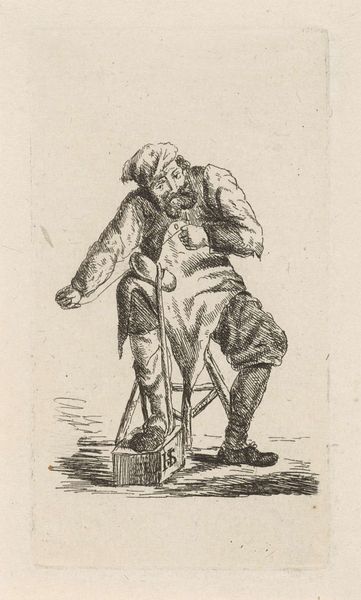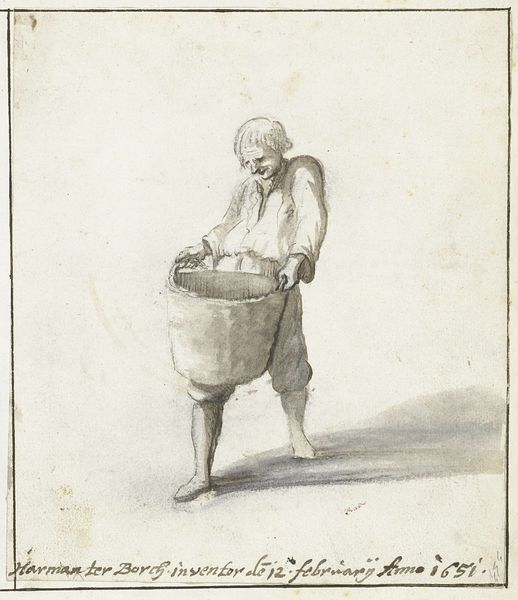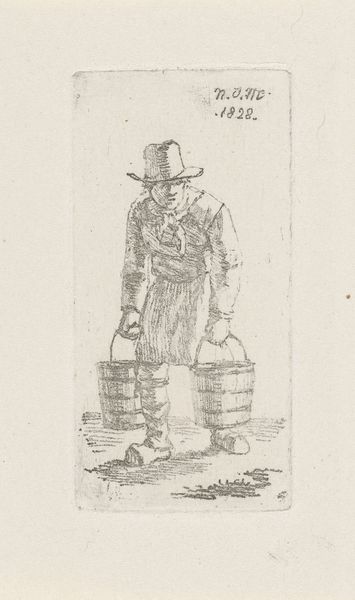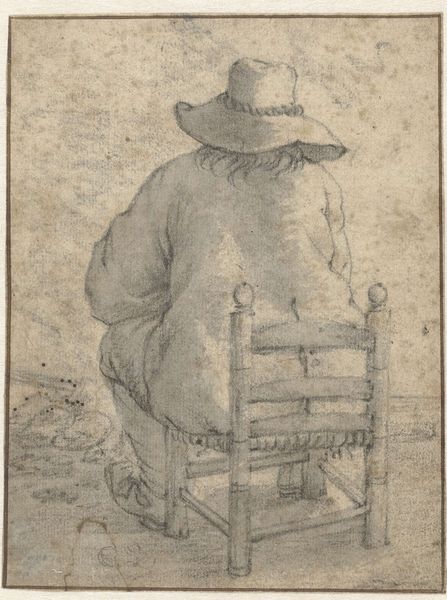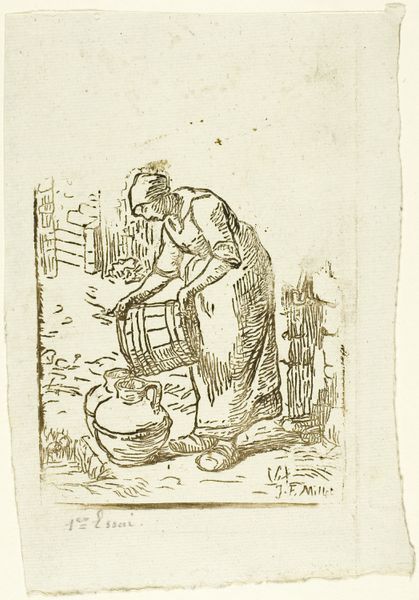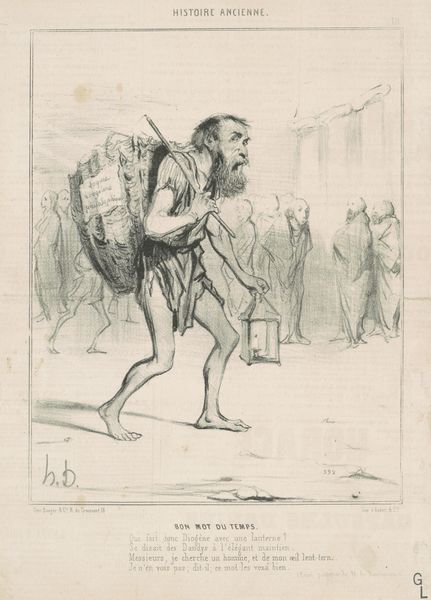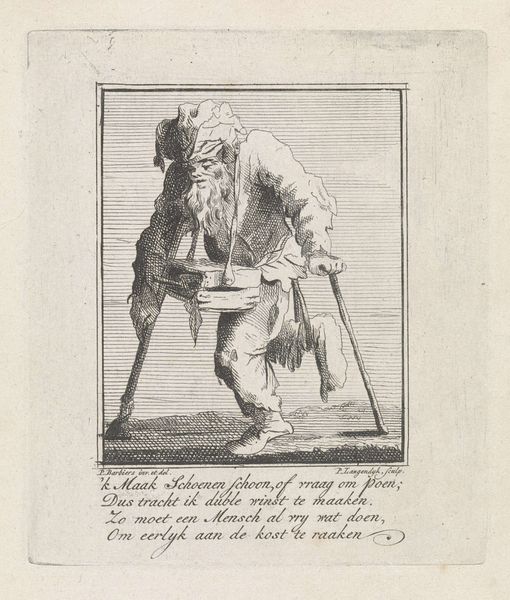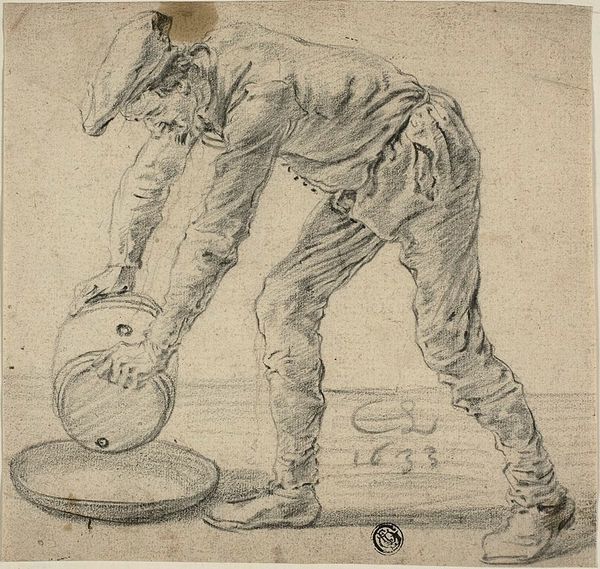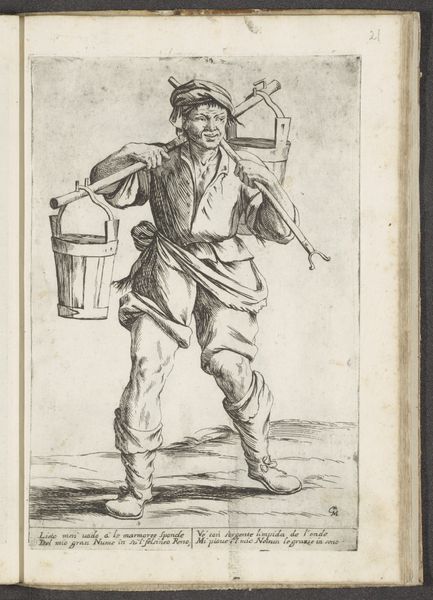
drawing, pencil, chalk
#
portrait
#
drawing
#
pen sketch
#
german-expressionism
#
figuration
#
pencil
#
expressionism
#
chalk
Copyright: Public Domain
Rudolf Gudden made this pencil sketch, titled "Zeck am Eselsrücken," or "Tick on a Donkey's Back," in 1910. It depicts a man carrying buckets. But this image is about more than just the figure it represents, it's about the wider social structure. We might consider this work in the context of early 20th-century Germany, a time marked by growing industrialization and urbanization, which brought with it new forms of labor and social stratification. The sketch captures a sense of burden and hardship. The stooped figure and heavy buckets symbolize the weight of labor. The title itself is telling. A "tick on a donkey's back" suggests a parasitic relationship, perhaps commenting on the exploitation of the working class. Gudden's decision to depict this scene through a rough, unrefined sketch lends a sense of authenticity and immediacy to the subject matter. To fully understand this work, historians delve into the socio-economic conditions of the time, examining labor movements, political ideologies, and the role of art in social commentary.
Comments
No comments
Be the first to comment and join the conversation on the ultimate creative platform.
